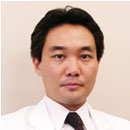
In a previous essay, I talked about good eating habits being preventative against thrombosis. This time I would like to talk about Natto. Natto has a long history of being a frequently-consumed food by the general population. This food is said to have been especially popular during the Edo period. It is still one of the most popular traditional Japanese foods, even presently. According to a 2003 questionnaire conducted through the internet that included participants aged between 10 and 60 years of age, 14.6% of those surveyed responded that they ate Natto every day, and about half answered at least once every two to three days. Also, those who increased their frequency of eating Natto attributed it to its abundant nutrients and health benefits.
When we look back in Japanese history, we realize that it was considered not just a food, but specifically as a health food. There are many Japanese proverbs related to Natto which indicate how this food is good for one’s health. “Natto soup should be eaten when you feel a cold symptom”; “Sake is the chief of all medicine, and Natto is the chief of all dishes”; and “The person with a preference for Natto rarely goes to the hospital (or gets sick)” are typical examples of such proverbs.
Natto contains various nutrients; 100g of Natto contains 16.5g of protein, 6.7g of dietary fiber, and 1.97 mg of B-complex vitamins. Natto is distinctive because it contains no cholesterol but is rich in B vitamins. It is believed to be effective for prevention and treatment of various diseases and many researchers have conducted studies on this topic. Animal research demonstrated Natto’s effect on cancer prevention approximately 40 years ago. Additionally, a recent study indicated that Natto is also helpful to reduce active oxygen. Active oxygen, also known as a free radical, is a kind of toxin which accelerates our aging and promotes development of various diseases such as cancer, diabetes, and others. It is produced from oxygen which ironically is indispensable for us in everyday life.
Natto attracted further attention when its ability to prevent thrombosis was discovered sometime in the 1980s. A scientist was trying to find a material which would prevent thrombus by putting various foods on an artificial thrombus model. One day, he put a piece of Natto on an artificial thrombus and it immediately began dissolving. It would later become the discovery of Nattokinase. This finding was followed by numerous studies which examined the effect of Natto on thrombosis.
Natto is made by fermenting soy beans which are added to natto bacillus. The natto bacillus secretes various enzymes (proteins) in this process. One of them is the protein known as subtilisin, which is also called Nattokinase. Nattokinase proved to have thrombus-dissolving activity. But another protein, called Bacillopeptidase F, has surprising additional functions. After focusing on the benefits of Bacillopeptidase F and conducting basic, animal and clinical studies, it was revealed that Bacillopeptidase F functioned not only as a thrombolytic but also as an anticoagulant to prevent blood clotting. Additionally, Bacillopeptidase F was shown to decrease human blood viscosity and improve blood circulation. We have confirmed scientifically that Natto is effective in preventing thrombosis.

Masahito Hitosugi, M.D., Ph.D.
Professor, Department of Legal Medicine
Shiga University of Medical Science
Education:
Graduate School of Medicine, Jikei University, Tokyo, Japan, M.D., Ph.D. (Dr. of Medical Science), 2000.
Residency:
Kawasaki Municipal Hospital (Internal Medicine), Kanagawa, Japan, 1994-1996.
License and Certification:
License of Medical Doctor (No. 367818), Japan Ministry of Health, Labour and Welfare, 1994.
Authorized Dr. of Medical Autopsy (No. 7189), Japan Ministry of Health, Labour and Welfare, 1999.
Authorized Dr. of Forensic Medicine (No. 100), Japanese Society of Legal Medicine, 2002.
The 1st grade of the Examination of Proficiency in English for Medical Purposes (No. 3), The Japan Society for Medical English Education, 2008.
・No.2 What causes metabolic syndrome?
・No.1 Why has metabolic syndrome been drawing greater attention?
・No.6 Health foods to prevent thrombosis
・No.5 Natto, a preventive measure against thrombosis
・No.4 Improving eating habits to prevent thrombosis
・No.3 Have You Heard of Traveler’s Thrombosis?